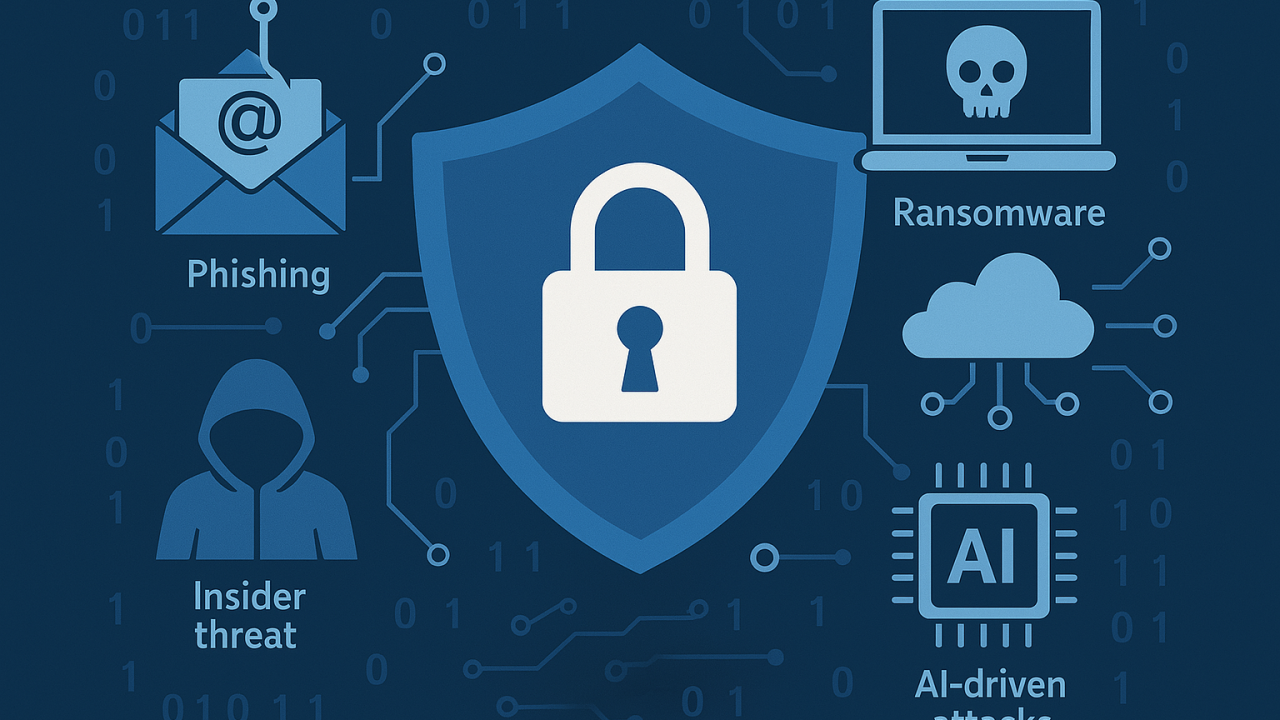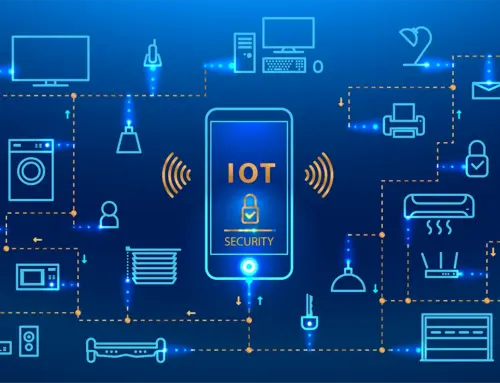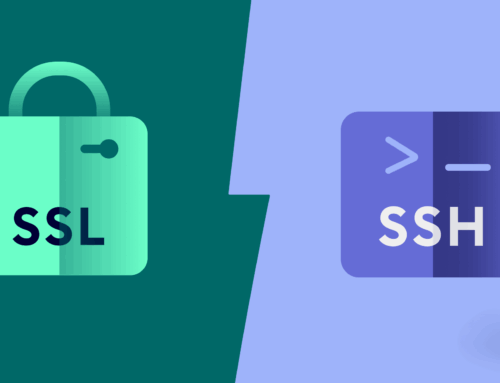
Top 10 Cyber Threats Facing Enterprises Today.
Top 10 Cybersecurity Threats Facing Enterprises Today & Associated Risks: Cyber Security Threats Update
In an increasingly interconnected world, understanding the evolving landscape of cyber security threats, including various types of cybersecurity, is paramount. As we approach 2025, the sophistication and frequency of cyberattacks continue to escalate, posing significant risks to individuals, businesses, and governments alike. This article delves into the top cybersecurity threats to watch, providing essential updates and insights to help you fortify your defenses and stay ahead of potential breaches. By staying informed and proactive, you can mitigate cyber risk and safeguard your sensitive data through effective information security practices.
Understanding Cybersecurity Threats
Comprehending the nuances of cybersecurity threats is the first line of defense in today’s digital ecosystem. Organizations must grasp the fundamental concepts and diverse types of cyber threats to implement effective security measures. A robust understanding helps in prioritizing resources, tailoring security policies, and conducting relevant security awareness training. Recognizing that cybersecurity is not merely an IT issue but a business imperative is crucial for creating a security-conscious culture. This involves educating all stakeholders about common cybersecurity risks and the importance of adhering to security best practices.
Definition of Cyber Security Threats
A cyber security threat is any malicious activity that attempts to access, damage, disrupt, or steal sensitive information, computer systems, networks, or digital devices. These threats can take various forms, from malware attacks and phishing attacks to ransomware attacks and distributed denial-of-service (DDoS) attacks. Understanding the definition of a cyber threat is essential for implementing effective security solutions and developing robust security policies. Cyber threats are constantly evolving, making it imperative for organizations to stay informed about the latest threats to watch and emerging trends in the cybersecurity landscape.
Types of Cyber Threats
The spectrum of types of cyber threats is vast and constantly expanding. Several types of attacks, including the top 10 cyber security threats, are especially concerning:
- Ransomware attacks, where malicious software encrypts data and demands payment for its release.
- Phishing attacks, often leveraging social engineering, trick individuals into divulging sensitive information.
- DDoS attacks overwhelm systems with traffic, causing service disruptions.
- Supply chain attacks target vulnerabilities in an organization’s supply chain to gain access to its systems.
Insider threats, whether malicious or unintentional, pose a risk from within. Injection attacks exploit vulnerabilities in software code. Staying abreast of these various types of cyber threats is critical for proactive defense.
Importance of Addressing Cybersecurity
Addressing cybersecurity is not just about preventing data breaches; it’s about maintaining business continuity, protecting brand reputation, and ensuring customer trust. The consequences of a successful cyber attack can be devastating, leading to financial losses, legal liabilities, and irreparable damage to an organization’s image. Proactive security measures are essential in managing security operations effectively., including regular security audits, comprehensive security awareness training, and robust endpoint security, are essential for mitigating cyber risk. For small businesses, the impact of a cyber attack can be particularly severe, underscoring the need for affordable and effective security solutions. Furthermore, having cyber insurance can provide a financial safety net in the event of a data breach.
Top Cybersecurity Threats to Watch in 2025
Common Cybersecurity Threats
As we advance toward 2025, certain common cybersecurity threats persist and evolve, posing a continued risk to organizations of all sizes. These evolving threats take various forms, including:
- Phishing attacks, often leveraging social engineering tactics, to trick individuals into divulging sensitive information.
- Malware attacks, including viruses, worms, and Trojans, which continue to infiltrate systems through various channels, such as email attachments and malicious websites.
Distributed denial-of-service (DDoS attacks) can disrupt business operations by overwhelming systems with traffic. It is imperative that organizations implement robust security measures, including security awareness training and endpoint security, to mitigate these cybersecurity threats effectively and maintain a strong security posture.
Emerging Cyber Threats
Here are some emerging cybersecurity threats that are gaining prominence as we approach 2025:
- Artificial intelligence (AI)-powered attacks, where malicious actors leverage AI to automate and enhance their campaigns.
- Supply chain attacks, targeting vulnerabilities in an organization’s supply chain.
- Cloud security vulnerabilities, stemming from misconfigured cloud environments or inadequate access controls.
Attacks targeting Internet of Things (IoT) devices, exploiting their inherent vulnerability, are also becoming more prevalent. To counter these emerging threats, organizations must invest in advanced security solutions, threat intelligence, and proactive monitoring.
Impact of Cyber Attacks on Small Businesses
Small businesses often face a disproportionate impact from cyberattacks due to limited resources and expertise in cyber security. A successful cyber attack can lead to significant financial losses and damage brand reputation. Moreover, many small businesses lack adequate security measures, making them easy targets for cybercriminals. It is crucial for small businesses to prioritize cyber security by implementing basic security awareness, investing in affordable security solutions, and considering cyber insurance to mitigate the potential impact of cyber risk and protect their sensitive data. Our focus is to assure your infrastructures are secure and safe.
Types of Cyberattacks
Social Engineering Attacks
Social engineering attacks exploit human psychology to gain access to sensitive information Effective security operations are crucial for protecting networks and systems. These types of cyber threats often involve tricking individuals into divulging credentials or performing actions that compromise cybersecurity. Phishing attacks, a common form of social engineering, use deceptive emails or messages to lure victims into revealing sensitive data. As we look toward threats in 2025, these attacks are becoming more sophisticated, leveraging AI to craft convincing and personalized scams. To mitigate this cyber risk, security awareness training is crucial, educating employees about the red flags of social engineering and the importance of verifying requests before taking action. Ensure your security posture is strong against social engineering attacks.
Supply Chain Attacks
Supply chain attacks target interconnected networks of suppliers, vendors, and partners that organizations rely on. These types of cyber threats exploit vulnerabilities in the supply chain to gain access to an organization’s systems and sensitive data. A successful supply chain attack can have far-reaching consequences, affecting multiple organizations and disrupting critical services. As we approach 2025, supply chain attacks are becoming more sophisticated, making it imperative for organizations to implement robust security measures to assess and manage cybersecurity risk within their supply chain. This includes conducting regular security audits of suppliers, implementing strong access controls, and monitoring for suspicious activity to fortify against this cyber threat.
Insider Threats
Insider threats originate from individuals within an organization who have access to sensitive information and systems. These threats in 2025 can be malicious, unintentional, or the result of compromised credentials. A disgruntled employee may intentionally leak or sabotage data, while an unwitting employee may fall victim to a phishing attack, granting unauthorized access to cybercriminals. Identifying and mitigating insider threats requires a multi-faceted approach, including robust access controls, continuous monitoring, and security awareness training. Proactive security policies should address potential cybersecurity Addressing the risks posed by insiders is crucial for safeguarding information security. sensitive data and maintaining a strong security posture. Addressing this type of cyber threat is crucial for overall cybersecurity.
Vulnerabilities and Exploits
Common Vulnerabilities in Cybersecurity
Common vulnerabilities are often the entry points that malicious actors exploit to launch cyberattacks. These vulnerabilities can exist in software, hardware, or even human behavior, underscoring the need for a comprehensive approach to cyber security. Outdated software, for example, is a prime target, as it often contains known flaws that have not been patched. Weak passwords, misconfigured systems, and a lack of security awareness training among employees are other common vulnerabilities that can be easily exploited. Addressing these foundational weaknesses is crucial for establishing a strong security posture. Our commitment is to ensure your systems are robustly secured against these prevailing cyber threats.
Recent Exploits to Note
Keeping abreast of recent exploits is vital for proactive cybersecurity. The landscape of cyber threats The landscape of cyber security is constantly evolving, and new types of cybersecurity risks emerge regularly. Vulnerabilities are discovered regularly. One concerning trend is the increasing sophistication of ransomware attacks, where attackers are not only encrypting data but also exfiltrating it, threatening to release sensitive data publicly if the ransom is not paid. Zero-day exploits new security systems must be developed to target previously unknown vulnerabilities in cyber security. Vulnerabilities, are also becoming more common. Understanding the tactics, techniques, and procedures (TTPs) of these recent exploits allows security teams to develop targeted defenses and improve their incident response capabilities. Let us keep you informed about these emerging challenges in cyber incidents, ensuring your defenses remain current and effective against the latest security threats.
Cybersecurity Best Practices to Mitigate Risks
Implementing cybersecurity best practices is essential for mitigating cyber risk and protecting against a wide range of cyber threats. These best practices encompass various aspects of cyber security, from technical controls to organizational policies and procedures. Regularly patching software, enforcing strong passwords, and implementing multi-factor authentication are fundamental security measures. Conducting regular security audits, providing comprehensive security awareness training, and developing incident response plans are also critical. In the face of emerging threats, adopting a proactive and layered security approach is crucial for minimizing the impact of potential cyberattacks. We are committed to helping you establish and maintain these vital cybersecurity best practices.
Cyber Insurance as a Defense Strategy
What is Cyber Insurance?
Cyber insurance helps organizations mitigate financial losses associated with cyber attacks and data breaches. Unlike traditional insurance policies, cyber insurance specifically covers the costs associated with responding to and recovering from cybersecurity incidents. This can include expenses related to incident response, forensic investigation, legal fees, notification costs, credit monitoring, and regulatory fines. In the event of a successful cyber attack, cyber insurance can provide a crucial financial safety net, helping organizations to weather the storm and minimize the long-term impact. We will ensure your infrastructure is safe and sound to reduce cyber risk.
Benefits of Cyber Insurance for Businesses
Cyber insurance provides access to specialized resources, such as incident response teams and legal counsel. This expertise can be invaluable in navigating the complexities of a cybersecurity incident. Additionally, cyber insurance can help businesses comply with regulatory requirements and contractual obligations related to sensitive data protection. Ultimately, cyber insurance provides peace of mind. You can move forward confidently, knowing that you have a financial safety net in place to mitigate the impact of a potential dos attack(cyber attack). Let us give you the security posture you need.
Choosing the Right Cyber Insurance Policy
Choosing the right cyber insurance policy requires careful consideration of your organization’s specific cyber risk profile and needs. It’s essential to assess your potential financial exposure in the event of a cyber attack, taking into account factors such as the type and volume of sensitive information you handle, the size of your customer base, and the regulatory environment in which you operate. When evaluating your security measures, consider the effectiveness of managed security solutions. Cyber insurance policies, pay close attention to the coverage limits, exclusions, and deductible. Also, consider the insurer’s reputation, claims handling process, and the additional resources they provide, such as incident response services and legal support. Ensure your cyber insurance, our policy is tailored to your unique needs to protect against potential cyber incidents (cybersecurity threats).
5 Surprising Facts About the Top 10 Cyber Threats Facing Enterprises Today
- Many enterprises underestimate the threat of insider attacks, with over 30% of data breaches involving internal personnel.
- Phishing attacks have evolved, with spear phishing targeting specific individuals rather than mass emails, increasing their success rate in business email compromise scenarios.
- Ransomware attacks have tripled in frequency over the past year, affecting businesses of all sizes, not just large corporations.
- IoT devices, often overlooked, are becoming a primary target for cybercriminals as they provide easy access to larger networks.
- Despite advanced security measures, human error remains the leading cause of data breaches, accounting for nearly 95% of incidents.
What are the top 10 cyber security threats today?
The top 10 cyber security threats today include ransomware attacks, phishing attacks, insider threats, DDoS attacks, supply chain attacks, malware attacks, social engineering attacks, business email compromise, data breaches, and vulnerabilities in cloud security. These threats are evolving, demanding that enterprises adopt robust security measures to safeguard their sensitive information.
How can enterprises mitigate cyber threats?
Enterprises can mitigate cyber threats by implementing a combination of security measures such as regular security audits, employee training on security awareness, and deploying advanced security tools. Additionally, developing and enforcing comprehensive security policies can help identify and address vulnerabilities before they are exploited by cyber attackers.
What role does employee training play in preventing cyber attacks?
Employee training is crucial in preventing cyber attacks as it raises security awareness among staff. Understanding common cyber threats such as phishing attacks and social engineering can empower employees to recognize and report suspicious activities, thereby strengthening the organization’s security posture against potential breaches.
What are insider threats and how can they be addressed?
Insider threats refer to risks posed by individuals within the organization, such as employees or contractors, who may misuse their access to sensitive data. To address these threats, enterprises should implement strict access controls, regular monitoring of user activity, and conduct thorough background checks during the hiring process.
What is a DDoS attack and why is it a concern for enterprises?
A DDoS (Distributed Denial of Service) attack overwhelms a network or service with traffic, rendering it unavailable to users. This type of cyber attack can severely disrupt business operations and damage reputations, making it essential for enterprises to have robust incident response plans in place to mitigate the impact of such attacks.
How do supply chain attacks pose a risk to cybersecurity?
Supply chain attacks target vulnerabilities in third-party vendors or partners that have access to an organization’s networks. By compromising these connections, attackers can infiltrate systems and access sensitive data. Ensuring supply chain security through rigorous vetting and monitoring of partners is essential to minimize this risk.
What are the emerging threats to watch in 2025?
Emerging threats to watch in 2025 include advanced AI-driven attacks that leverage machine learning to exploit vulnerabilities, as well as increasingly sophisticated social engineering tactics. Organizations must stay informed about these evolving threats to enhance their cybersecurity defenses and remain resilient against potential breaches.
How does cloud security impact cyber risk for enterprises?
Cloud security is critical as more enterprises migrate to cloud-based services. Inadequate cloud security can lead to data breaches and unauthorized access to sensitive information. Implementing stringent cloud security measures, including encryption and access controls, is vital to protecting data stored in the cloud from cyber threats.
What is the importance of cybersecurity insurance for businesses?
Cybersecurity insurance helps businesses mitigate financial losses resulting from cyber incidents, including data breaches and ransomware attacks. It is an essential component of a comprehensive risk management strategy, providing coverage for recovery costs and liabilities associated with cyber threats.







